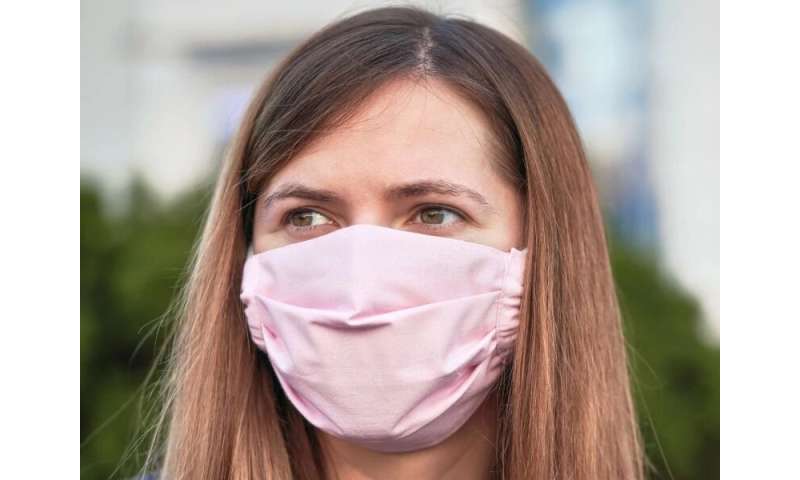
A cloth mask can help reduce the spread of COVID-19, but there’s a right way and a wrong way to wear one.
Used incorrectly, such masks could put you and others at risk, according to doctors at University of Texas Health Science Center at Houston. And remember: Masks are only a supplement—not a replacement—for such precautions as avoiding contact with other people and staying at home.
The best way to protect against COVID-19 is social distancing, washing your hands often, and only leaving your home for essential errands.
The coronavirus is spread through airborne droplets, which can travel up to 6 feet and even farther if you cough or sneeze.
“Many respiratory viruses, COVID-19 likely included, can infect you through multiple routes, including the nose, mouth and eyes. The droplets can also survive for around 72 hours on surfaces, so when you touch a contaminated surface you can still bring the virus up to your face,” pediatric infectious disease specialist Dr. Michael Chang said in a UT Health news release.
A cloth mask works best at keeping your germs in, rather than keeping others’ germs out, he said. Your mask should be made of a fabric with a high thread count for durability.
After you put your mask on, don’t touch it.
“Once you touch the cloth part of the mask, you have to consider yourself contaminated and wash your hands immediately,” said Dr. Hilary Fairbrother, an emergency medicine physician. “If you must adjust it, only touch it by the strings or the ties in the back.”
Your mask should cover your nose and mouth. It should be snug but not so tight that it touches your lips.
“If a cloth mask is touching your lips and droplets have saturated the fabric, droplets could then be directly entering your mouth,” Fairbrother said.
The reverse is also true, where your droplets could spread through the mask to others, according to Chang.
“Depending on the fabric of the mask, you can imagine pressing the cloth mask up against your lips, nose, and eyes, with the moisture build-up from your breath, then transmitting the infectious agent through the mask,” he said.
After you wear your cloth mask in public, be careful when taking it off and immediately wash it in hot water.
“It’s best to remove it by the strings and put it directly into the washer and then wash your hands,” Fairbrother said. “Wash it on a hot cycle to kill the germs. The other option is to put it in a bag and let it sit for 72 hours—that is the length of time studies are showing the virus can survive.”
Having several cloth masks on hand means you’ll always have a clean one available.
But even if you have cloth masks, you need to stay at home and away from others if you’re sick.
“The cloth mask may catch the virus going out in large droplets, but if a sick person touches the mask while they’re out, it could all be useless,” Chang said. “Everyone wearing cloth masks will not be a panacea for the COVID-19 pandemic in the United States.”
Source: Read Full Article
